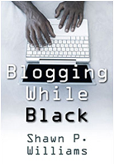Awareness of Lupus increases among women reported by the U.S. Ad Council
DSN Newswire (Office of Public Health and Science Communications)
Twenty-two percent of 18-44 year old women in the United States reported hearing more about lupus compared to a year ago, according to a national online survey released today by the Ad Council. In an effort to further engage minority women, who are at the greatest risk for lupus, the U.S. Department of Health and Human Services’ (HHS) Office on Women’s Health (OWH) and The Advertising Council are distributing new radio public service advertisements (PSAs) in time for World Lupus Day (May 10).
Lupus affects minority women three times more than white women. Lupus is a chronic, autoimmune inflammatory disease that causes the immune system to mistakenly attack the body’s own healthy cells and tissue. It strikes adult women 10 to 15 times more frequently than adult men. Symptoms of the disease include fatigue, hair loss, painful or swollen joints, fever, skin rashes and kidney problems.
Launched in March 2009, The “Could I Have Lupus?” PSA campaign targets young, minority women of childbearing age, 18 to 44, who are at greatest risk for lupus. The objective is to help these women understand the disease, its effects, and identify early warning signs so that they can request a medical evaluation from their doctor or community health center.
“When we started this campaign, we faced a very limited awareness and knowledge about lupus among women at greatest risk,” said Frances E. Ashe-Goins RN, MPH, acting director of OWH at HHS. “Through our work with the Ad Council, we are significantly increasing awareness and providing women with the opportunity for an early diagnosis, which will reduce the number of lupus related deaths.”
The Ad Council’s national survey found that 22 percent of women surveyed said they had seen or heard the campaign advertising. Additionally, 15 percent reported they have recently heard, seen or read something about lupus, compared to 10 percent in 2009. Notably, one year after campaign launch, 14 percent of women surveyed reported having visited a website for more information about lupus compared to 9 percent of women surveyed a year ago.
“The exposure this campaign is receiving in the media is translating into action,” said Peggy Conlon, president and CEO of the Ad Council. “We are looking forward to continuing our work with the Office on Women’s Health to develop essential communications tools that will further educate women about lupus and its symptoms.”
New campaign PSAs launching today consist of :30 and :60 second English and Spanish radio spots. Created pro bono by Los Angeles-based ad agency Muse Communications, the PSAs feature the stories of real women and conclude with the tagline, “For answers. For support. For hope.” and direct women to visit www.couldIhavelupus.gov or www.podriayotenerlupus.gov, or call a toll-free number (1-800-994-9662) to learn more about the symptoms and treatment options for lupus and access local resources.
“Our sincere hope is that the work we have done and will continue to do contributes to the call to action for women of color,” says Shelley Yamane, president and chief strategic officer of Muse. “We believe if we can significantly increase awareness to the symptoms of this dreaded disease, we can contribute to the early diagnosis and successful treatment of Lupus for thousands of American women,” she added.
Per the Ad Council model, the PSAs will run and air in advertising time that is donated by the media. To date, the Lupus Awareness campaign, has received more than $27 million worth of donated media since its launch in March 2009.
The online survey was commissioned by the Ad Council and HHS and conducted in partnership with Greenfield Online/Toluna from March 30 to April 7, 2010. The sample consisted of 404 women between the ages of 18 and 44 who have never been diagnosed or treated for lupus. Respondents were part of households that are members of a large national opt-in panel managed by Greenfield Online/Toluna, or were recruited via Real-Time Sampling™ which invites adults to complete a survey without asking them for any commitment to join a market research panel. Preset sampling specifications were set to ensure a nationally representative sample of women, reflecting a range of demographic groups.




